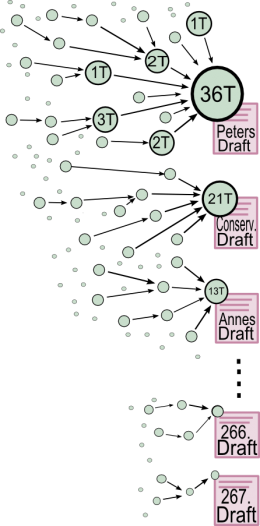Communicative Delegation
"Communicative delegation" is a special form of delegated voting, where in contrast to the "non-communicative delegation" each voter and each proxy can have their own position draft, which they might change at any time. They are formalized in referable documents with a change history. With the weight of their vote(s) voters and proxys can negotiate with their proxys about certain passages of text they want to change and vice versa. Text and ideas flow in both directions through the delegation tree. Thus the tree becomes like a map of political ideas, each branch representing a unique solution to the given problem. And each branch splitting up in sub-branches, i.e. sub-solutions.
Example: The "ecological draft" of a solution could be supported by the liberal Ecologists, the conservative Ecologists, Greenpeace, ... . All of them negotiating with each other and with their common proxy for unique changes of the common "ecological draft".
The main benefit of this concept is its capacity to meaningfully structure social discourse in large (up to global) scale. (If each proxy has 20 voters (about the max. number with whom reasonable discussion is still possible) then a tree of only 5 levels would contain 60 Billion drafts.) The voter is not forced to vote "strategic" in order to avoid his minority position being "invisible" at the bottom of a very long list of drafts. He can instead freely choose the right position for his draft in the tree, where it will be visible for exactly the right people and from where they together can influence the more popular drafts. This supports the formation of consensus / synthesis and minimises the need for strategic compromises.

